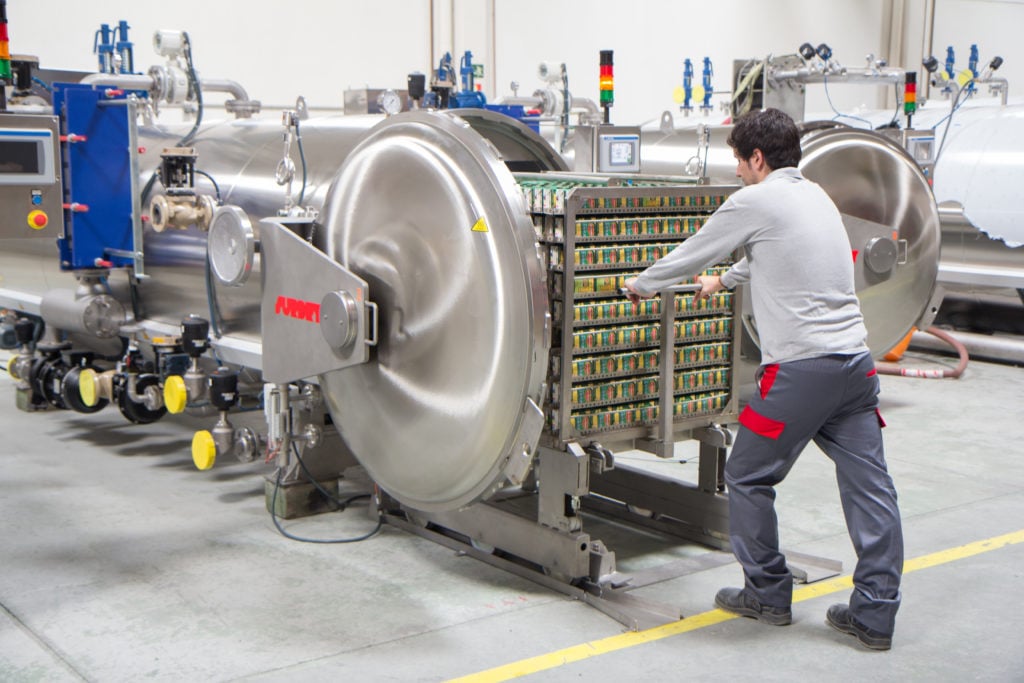Installation of the retort is a vital process, which is why it should only be performed by experienced professionals, following the instructions carefully. Many errors can occur unless the process is carried out properly and the consequences may be serious.

Incorrect installation will prevent us from controlling the supply of services, may lead to damage to the equipment and even cause personal accidents. Therefore, special attention should be paid to avoid this type of errors:
Failure to follow the installation instructions and drawing requirements
Retorts must be accompanied by quality documentation, including a clear, detailed and easy-to-understand installation guide. The retort manual should contain instructions on the preparation of the equipment and the place where it is to be installed (preparation of the floor and bases, appropriate supply of steam, water, electricity and compressed air), placement of the load and description of the procedure to follow.
One of the typical errors in the installation of a retort is failure to follow the manufacturer's installation instructions properly. Without all of the elements required or the specified quality of fluids, the quality and amount of fluids introduced in the retort cannot be controlled.
Failure to line up the retort correctly with the loading trolley
The trolley must be aligned with the retort, otherwise work ergonomics will be negatively affected. If they are not lined up properly, it will be more difficult to perform the loading and unloading tasks, and the risk of causing personal injury or damaging the equipment will increase.
Inside the retorts, there are different loading and unloading systems, including manual loading and semi-automatic and automatic solutions. Fully automated systems are designed for large-volume production in remotely controlled enclosed environments. On the other hand, semi-automatic solutions focus on small and medium production rates. In this case, the systems are designed to assist loading and unloading tasks, hence increasing ergonomics and reducing the physical effort of operators.
Incorrect positioning of the steam and hot water exhaust pipes
Regardless of the technology used, retorts in the food sector use steam to sterilize products. Although the equipment is very safe, improper installation may pose safety risks related to steam and hot water leakages.
At the time of installation, steam and hot water exhaust pipes should be conducted to condensers or safe release points. Unless carried out properly, there is a risk of staff suffering burns or noisy steam emissions to the atmosphere.
To avoid work-related accidents, it is also vital to follow these basic safety measures:
- Staff must be trained prior to handling the retort.
- The manufacturer’s User Instructions must be strictly followed.
- Staff must wear Personal Protection Equipment to avoid burns from steam or direct contact.
- The retort must be regularly inspected to ensure its proper condition and operation.
Failure to size the fluid supply pipes properly
Pipes that distribute fluids to the retort must have the appropriate dimensions in order to provide a sufficient flow of steam, water and air. The size of the pipes will depend on the equipment and the required characteristics must be duly specified in the retort documentation.
Pipes of an incorrect size pose a risk to the sterilization of the products. Unless there is an appropriate supply of fluids, it is likely that the process will not be fully completed, undermining the product quality and even posing food safety risks.
To avoid this type of errors and ensure the proper installation of the retort, it is important to carry out the following measures:
- Only use qualified personnel to perform the installation.
- Follow the manufacturer’s instructions carefully.
- Request guidance from the manufacturer. On-site services may be costly but an appropriate and well-served remote service is sufficient to provide guidance on the installation.
- If the on-site supervision service has not been contracted prior to the commissioning of the retort, notify the manufacturer of the outcome of the installation, including drawings and images.
The retort will be successfully installed as long as the instructions are strictly followed and appropriate guidance is provided. It must be taken into account that the proper performance of this process is essential in order to avoid damage to the equipment, production stoppages and serious quality problems in the food products.


